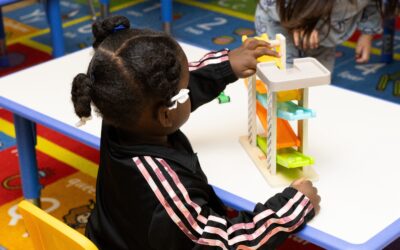One of the things all parents have in common is a desire to see their children are happy, healthy and safe throughout their lives and in everything they do. Though it sounds simple, it’s usually quite complex to guarantee these things as we foster independence and choice in our children. It can be even more challenging with a child on the spectrum. We can, however, take certain measures to ensure our children on the spectrum are safe in their day-to-day.
We can break down safety tips into a couple of categories: safety at home and safety in public. In this post, we’ll break down some practical safety tips for you and your child on the spectrum.
Safety in Public
There are plenty of things to consider when it comes to safety, especially when in public and outside of the home. Between school, therapy, events, and get-togethers, the older your child gets, the more exposure they’ll have to outside influences and more diverse environments.
Know When to Stay Close and When to Give Space
All parents tend to consider their child’s safety in a variety of ways. The first of those usually involves figuring out ways to be involved enough to step in easily when need be. While we certainly agree it’s important to know how and when to step-in and intervene for your child’s safety, we think it can be equally important to know when to step back a bit.
For example, if the environment is new to your child, it is almost always best to stay close to them to foster a feeling of familiarity and stick close enough to comfort them if they come across any potential triggers. This is especially true if there are no other trained caretakers, parents or familiar faces nearby. If you know your child has severe physical or emotional reactions to certain stimuli, keep any environmental hazards a safe distance away and bring along any belongings or medications that help with those reactions.
If the environment is not new, or there are trained professionals or caretakers in the space sometimes it is best to step back, and foster independence in your child by letting them explore and learn the rules and parameters of the space on their own. Though it can be hard to step back, this is an important step for your child to learn about how to keep safe on their own, much like our next tip.
Set Ground Rules
One of the best ways to guarantee your child’s safety in public settings is by setting ground rules with them before you leave the house. We recommend setting rules around communication to encourage your child to ask permission and communicate their needs when they are in a public setting. Encouraging communication with the other adults and children in the space can also help guarantee your child is learning to advocate for themselves while taking their safety into their own hands.
As your child learns the ground rules for public outings, they’ll be better equipped and more independent, which can help guarantee their safety outside of the home.
Safety at Home
Your home should always be a safe space for your family. Parents tend to worry less about safety at home, as it is an environment that is controlled, consistent and easier to manage.
As your child spends time at home, they learn what things they enjoy, what spaces are their own and what things might trigger sensory overload or tantrums. Despite those assurances however, it is still important to keep safety in mind when at home.
Designating Space
We strongly recommend that all children on the spectrum have a designated safe space within your home. Though this typically tends to be your child’s room, it can also be in another room of the house. It should be free of any unpleasant stimuli, relatively quiet, full of belongings that your child feels comfortable with and openly available to them.
Not only will designating this space help improve behavior at home, it can also help your child feel safe and have a place to go when they feel overwhelmed or even when they feel a tantrum coming on. This can help reduce any instances of self-harm when your child displays any transgressions.
Wandering
Though it can occur both outside and inside the home, wandering in children on the autism spectrum is unfortunately a common occurrence. Wandering can be a very stressful behavior to deal with, and people on the spectrum of all ages can display wandering tendencies. To combat it, we recommend:
- Securing your home’s doors, windows and other openings with locks, alarms or visual/audio cues that discourage wandering.
- Communicating with neighbors, caretakers and your other peers so they can help keep a watchful eye on your child at all times. You can also provide pertinent medical information, safety plans, and photographs to them.
- Getting in touch with local authorities so they know what your child looks like, and what wandering tendencies they may have.
- Consider getting your child an ID bracelet that contains vital information and identification in the case that they wander and are lost.
- Working on ways to teach your child to swim, remember your phone number and practice other important out-of-home skills.
Your child’s safety is paramount, and as parents and caretakers, we can only do our best to guarantee that safety while teaching our children how to take safety into their own hands. For more autism-related tips, news and stories be sure to keep up with us on our Facebook, Twitter and Instagram and feel free to reach out via our contact page to learn more about our services.



